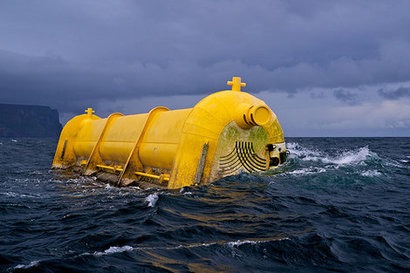
The project focused on the development of a knowledge network enabling biofouling experts to work closely with marine energy test site personnel and technology developers to gather data, share knowledge and to formulate expertise on the specific aspects of biofouling that are relevant to the marine renewables industry. Initial field research was carried out at EMEC’s wave and tidal energy test sites to identify common fouling organisms found in Orkney waters.
Biofouling is caused by the settlement and growth of organisms on submerged structures, thereby presenting a major concern to industries working in the marine environment. The hydrodynamic and mechanical consequences of biofouling organisms on marine energy converters are of particular concern as they may decrease efficiency of energy generation, and accelerate corrosion of marine metals affecting the survivability of the technology.
ICIT is using its knowledge network to build on this initial study, aiming to identify innovative solutions to mitigate these issues.
“Further work is needed to understand how the timing of settlement of these types of organisms could impact the fouling of artificial structure deployment and maintenance schedules” said Joanne Porter, Associate Professor Marine Biology at ICIT. “Biofouling is a ubiquitous problem for any industry putting structures or vessels into the marine environment, however there are specific issues regarding biofouling for the marine renewable energy industry. By sharing data with other test centres we can build up a clearer picture to fill any knowledge gaps and help marine energy developers using these facilities drive down the cost of energy from their technology.”
Matthew Finn, Senior Business Development Manager at EMEC added that the research team would ideally like to develop a map of biofouling in key strategic areas for the marine industries around Orkney before expanding it to include other key marine renewables sites around the world. The two organisations are now seeking to build the initial studies into larger research projects and identify funding mechanisms that can be used to fill these key knowledge gaps.
For additional information:

